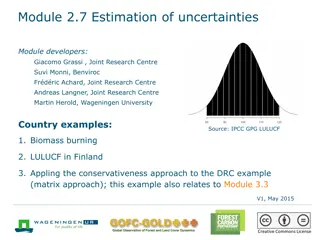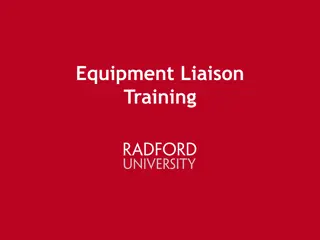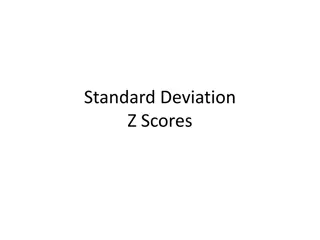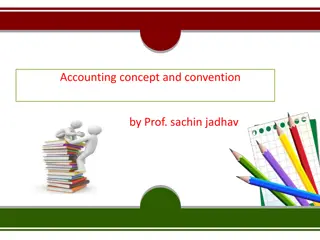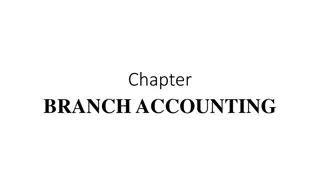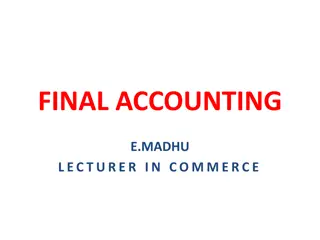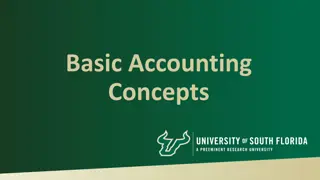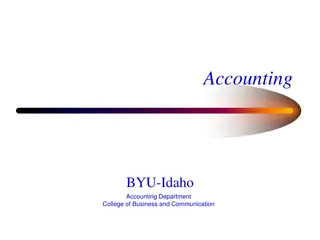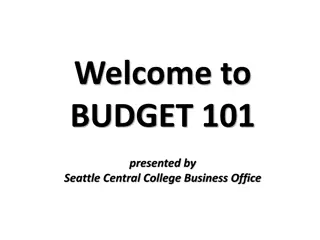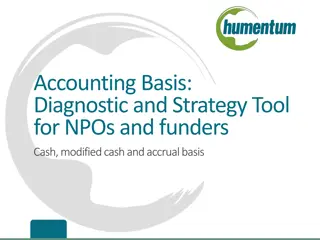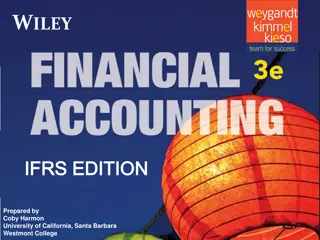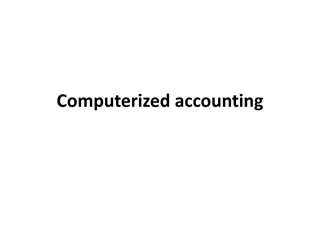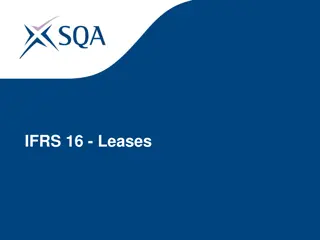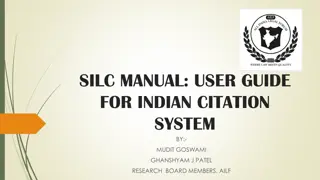Indian Accounting Standard 2: Inventories Overview
This article provides an overview of Indian Accounting Standard 2 (IAS 2) on inventories. It covers the objectives, scope, definitions, and measurement of inventories at the lower of net realizable value or cost of purchase. The standard applies to all inventories except financial instruments and biological assets, offering guidance on determining costs and subsequent recognition as expenses. It highlights the importance of NRV, fair value, cost of purchases, and cost of conversion in inventory accounting.
Download Presentation

Please find below an Image/Link to download the presentation.
The content on the website is provided AS IS for your information and personal use only. It may not be sold, licensed, or shared on other websites without obtaining consent from the author. Download presentation by click this link. If you encounter any issues during the download, it is possible that the publisher has removed the file from their server.
E N D
Presentation Transcript
INDIAN ACCOUNTING STANDARD 2 INVENTORIES
OBJECTIVE It Prescribe the accounting treatment of inventories. It Deals with the determination of cost. It determines Subsequent recognition as an expense, including any write-down to NRV. Guidance on the cost formulas that are used to assign costs to inventories.
SCOPE This standard applies to all inventories except: (A) Financial instruments (IND AS 32, financial instruments: presentation and IND AS 109, financial instruments) (B) Biological assets (i.e. Living animals or plants) related to agricultural activity and agricultural produce at the point of harvest (see IND AS 41, agriculture). This standard does not apply to the measurement of inventories held by (A) Producers of agricultural and forest products, agricultural produce after harvest, and minerals and mineral products. (B) Commodity broker-traders who measure their inventories at fair value less costs to sell.
DEFINITIONS: 1) INVENTORIES Inventories means asset : i. Held for sale in the ordinary course of business, ii. In the process of production for such sale; or iii. In the form of materials or supplies to be consumed in the production process or in the rendering of services.
2) Net realisable value It is the estimated selling price in the ordinary course of business less the estimated cost of completion and the estimated costs necessary to make the sale. In other words, NRV is the Net amount that an entity expects to realize from the sale of inventory in the ordinary course of business. 3) Fair value It is the price that would be received to sell an asset or paid to transfer a liability in an orderly transaction between market participants at the measurement date.
MEASUREMENT OF INVENTORIES AT THE LOWER OF NET REALISABLE VALUE COST OF PURCHASE
COST OF PURCHASES INCLUDES OTHER COST TO BRING INVENTORY TO PRESENT LOCATION AND CONDITION TRADE DISCOUNTS, REBATES AND OTHER SIMILAR ITEMS IMPORT DUTIES AND OTHER TAXES PURCASE PRICE TRANSPORT HANDLING
COST OF CONVERSION Cost of conversion of inventories includes costs directly related to the units of production such as: Direct Material Direct Labour Other direct costs Overheads
Other Costs Other costs are included in the cost of inventories only to the extent that they are incurred in bringing the inventories to their present location and condition. Costs to be excluded from the cost of inventories and recognized as expenses in the period in which they are incurred are: (a) Abnormal amounts of wasted materials, labour or other production costs, (b) storage costs, unless those costs are necessary in the production process before a further production stage, (c) administrative overheads that do not contribute to bringing inventories to their present location and condition; and (d) Selling costs.
Techniques for the measurement of cost Retail method Standard cost
RETAIL METHOD Cost is determined by reducing the sales value of the inventory by the appropriate percentage gross margin. The percentage used takes into consideration inventory that has been marked down to below its original price. This method is often used in the retail industry for measuring inventories of rapidly changing items that have similar margins.
STANDARD COST METHOD Cost is based on normal levels of materials and supplies, labour efficiency and capital utilisation. They are regularly reviewed and revised where necessary.
Cost of Inventory of Service Provider They measure them at the costs of their production. These costs consist primarily of the labour and other costs of personnel directly engaged in providing the service, including supervisory personnel, and attributable overheads. Labour and other costs relating to sales and general administrative personnel are not included but are recognized as expenses in the period in which they are incurred. The cost of inventories of a service provider does not include profit margins or non-attributable overheads that are often factored into prices charged by service providers.
DISCLOSURE 1. the accounting policies adopted in measuring inventories. 2. Analysis of carrying amount the total carrying amount of inventories and the carrying amount in classification appropriate to the entity. Common classifications on inventory are as follows: Merchandise Product supplies Materials Work in progress Finished goods Accounting policies
DISCLOSURE 3. Inventories carried at fair value less cost to sell. 4. Amounts recognised in profit and loss The amount of inventory recognised as an expense during the period. The amount of any write-down of inventories recognised as an expense in the period. 5. Inventories pledged as security.
THANK YOU PRESENTATION BY :- ADITYA CHANDNANI









